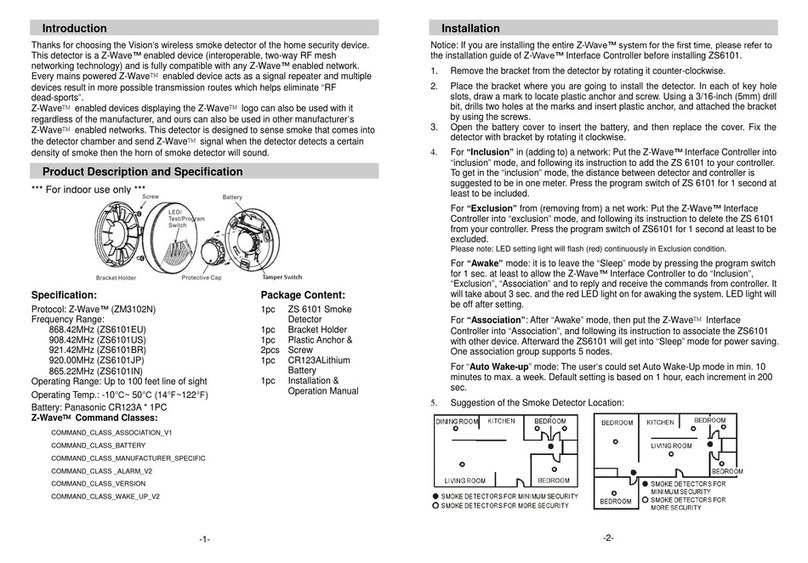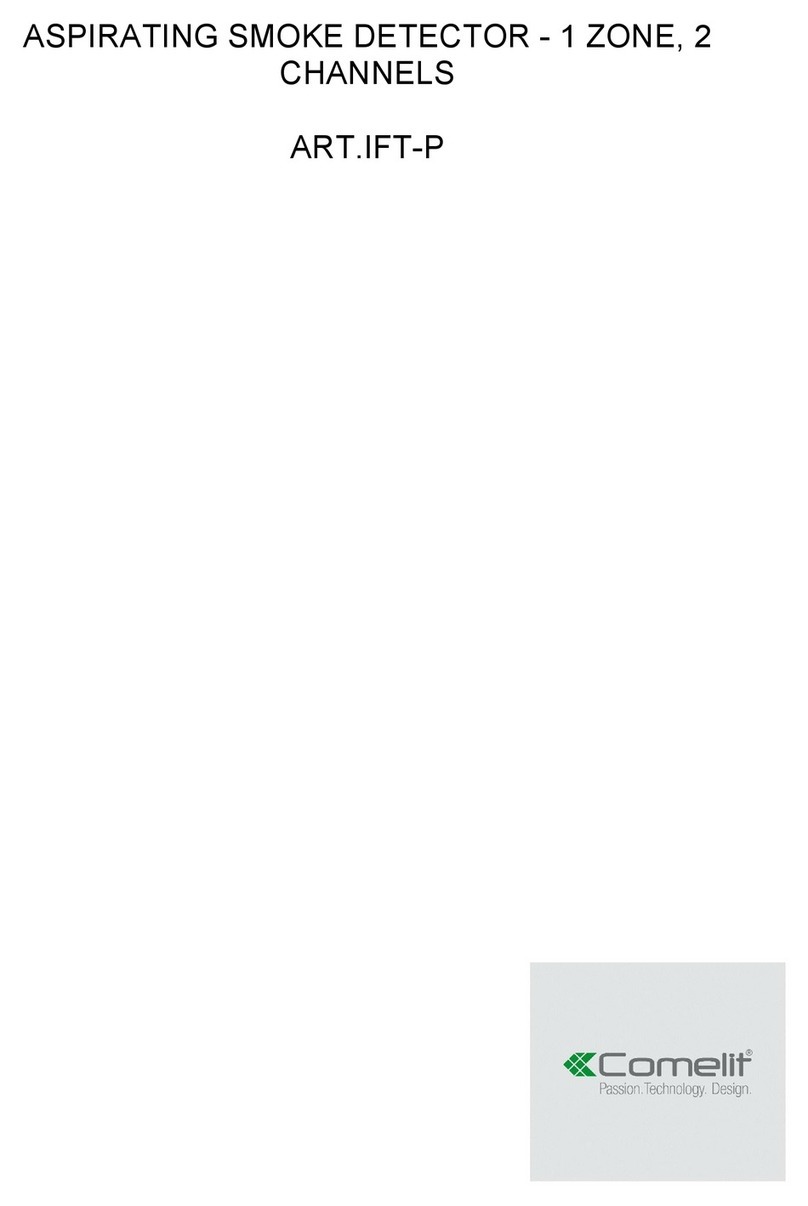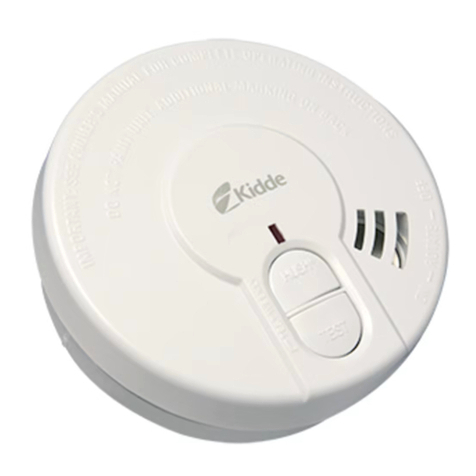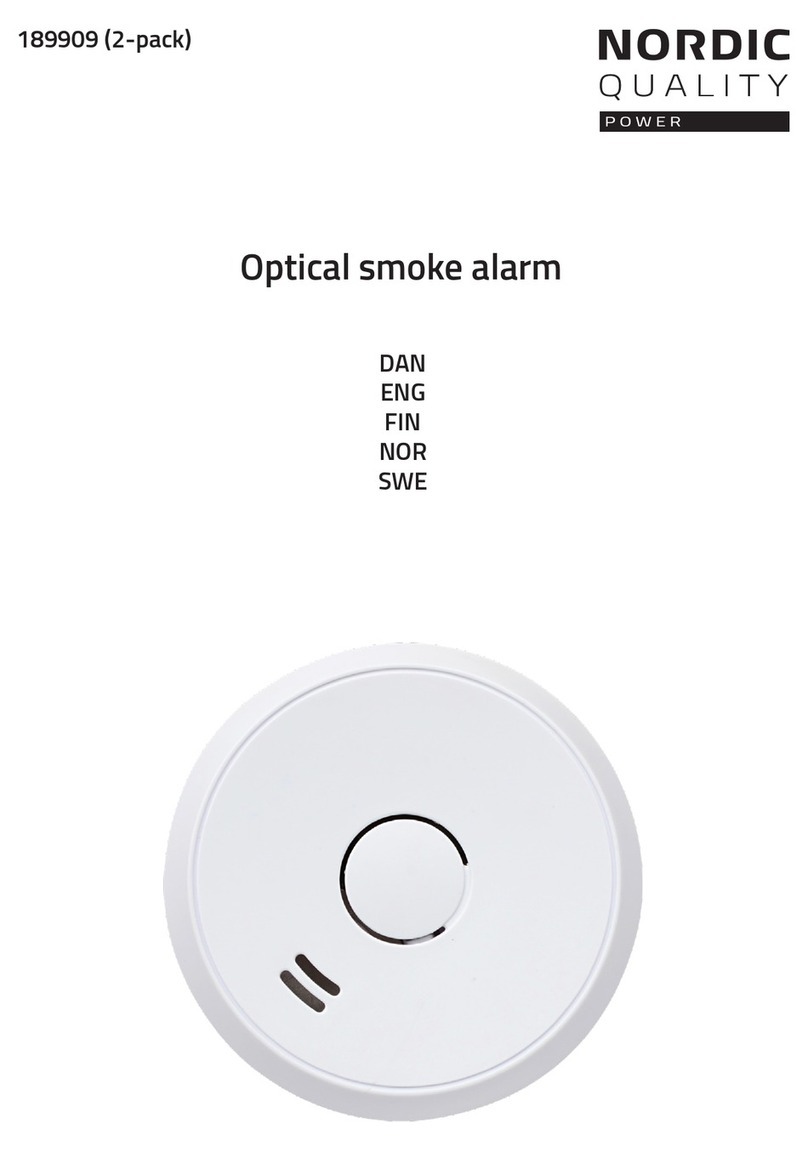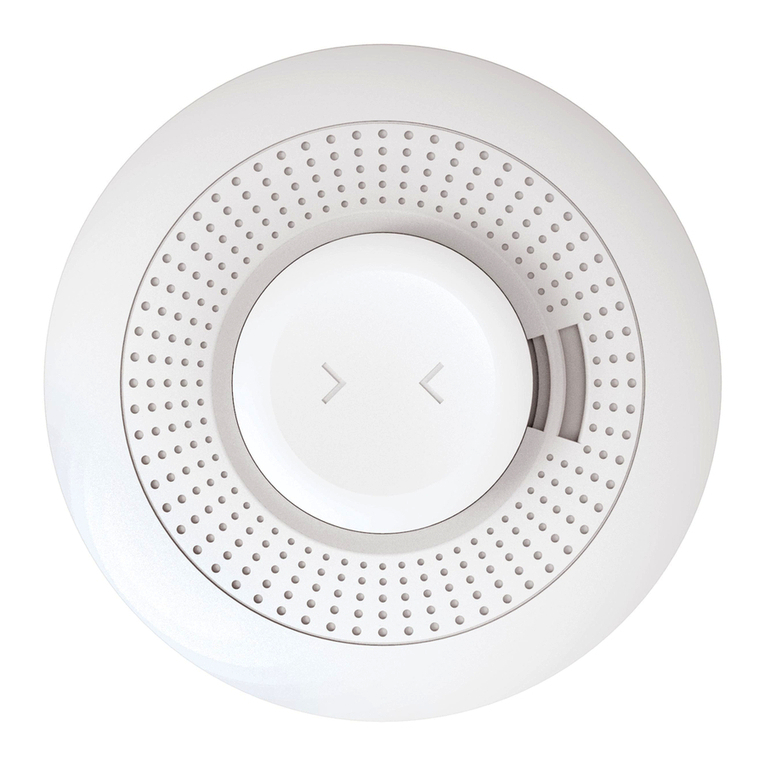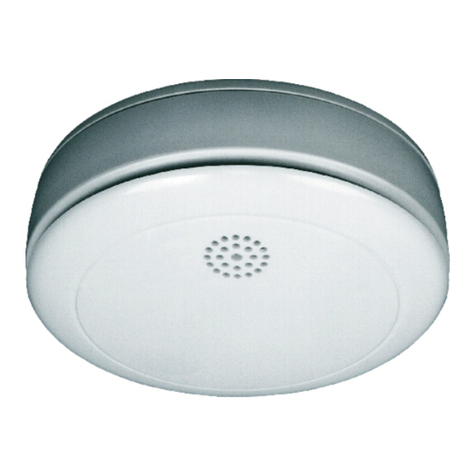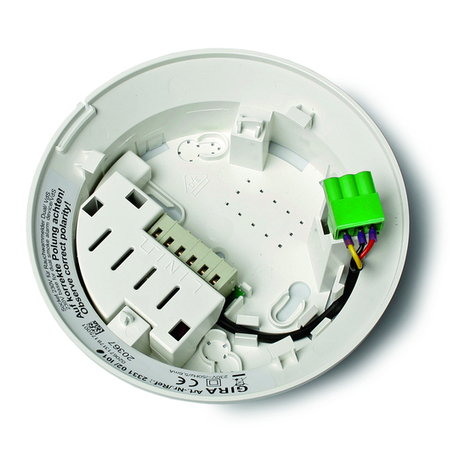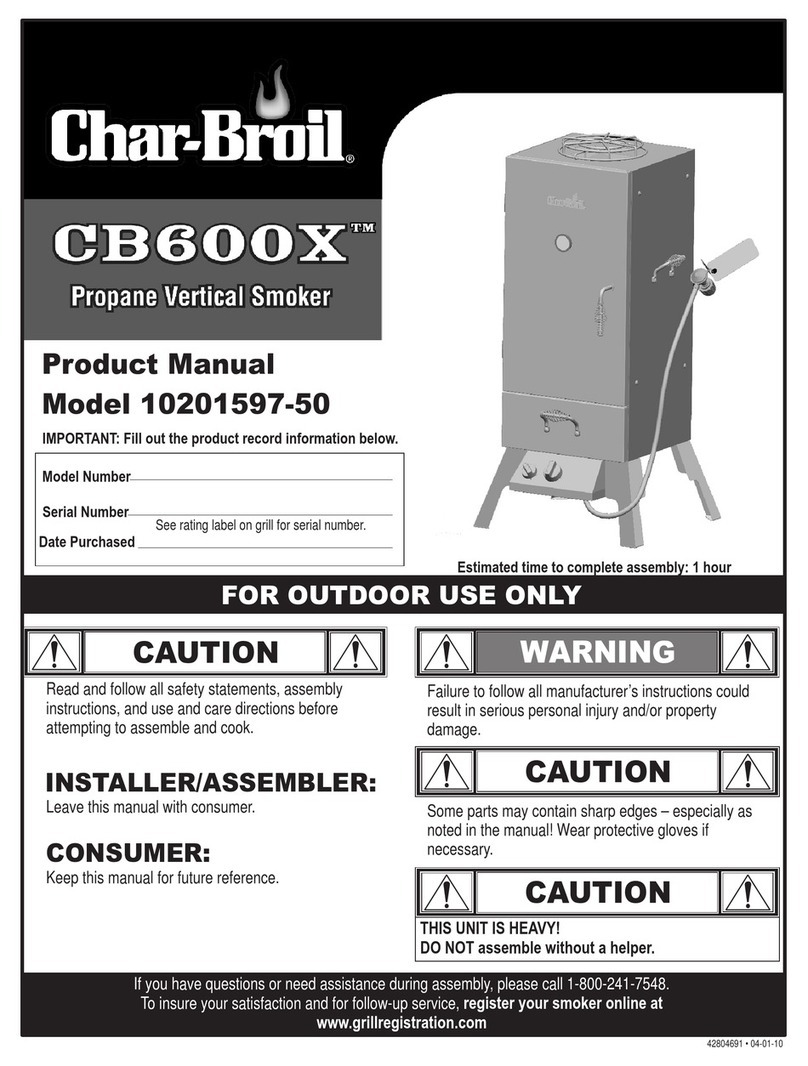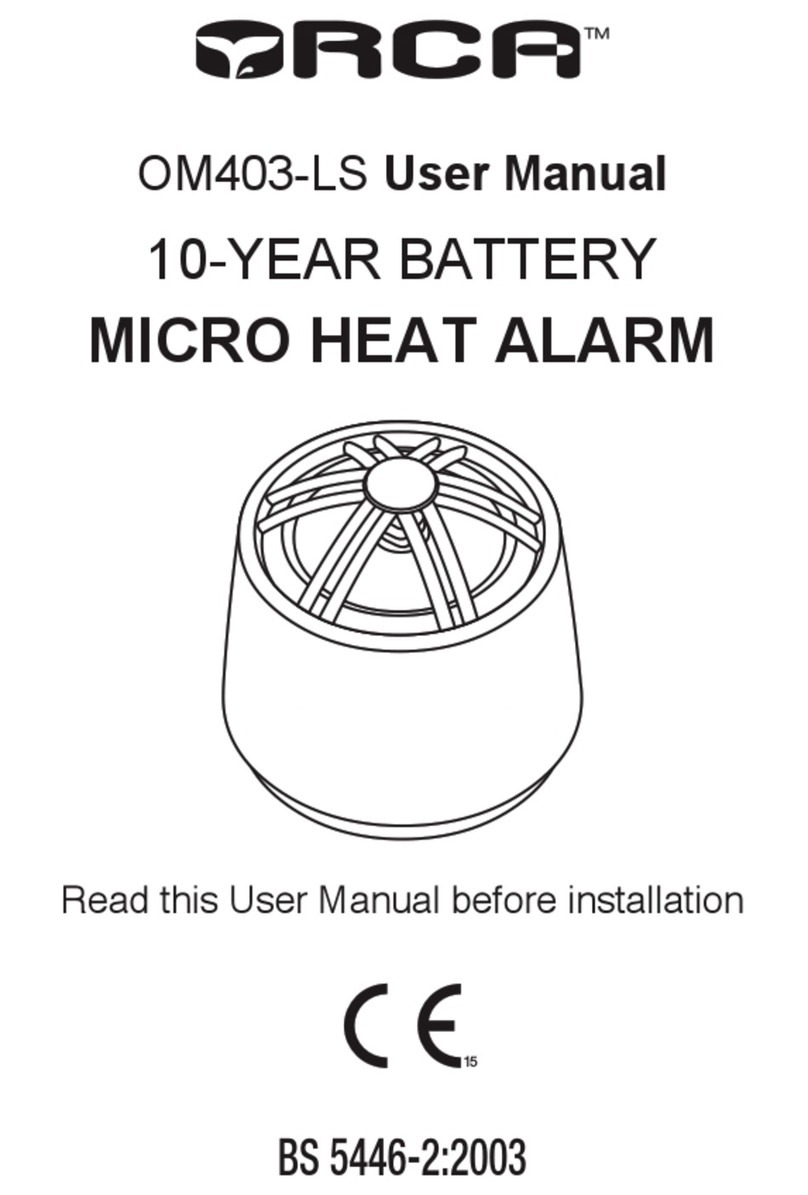SONA Electronics SM-SN-1 User manual

1
Installation and User Guide
SM-SN-1 Mains Operated Smoke Alarm
WSM-SN-1 Mains Operated Smoke Alarm Wi-Safe 2®
HM-SN-1 Mains Operated Heat Alarm
WHM-SN-1 Mains Operated Heat Alarm Wi-Safe 2®
"sona install"
"sona learn in wireless"

2
W2 module contained within WSM-SN-1 and WHM-SN-1 independently tested to RF standard
ETSI EN 300 220-2 V2.3.2 (2010-02) byTRaC Global Ltd
0086
0086-CPR-557790
EN 14604:2005
DOP:SADOPSM-SN-01
BS EN 14604:2005
Licence No: KM557789
0086
0086-CPR-557790
EN 14604:2005
DOP:SADOPWSM-SN-01
BS EN 14604:2005
Licence No: KM557789
BS 5446-2: 2003
Licence No: KM607094
Sprue Safety Products Ltd. Vanguard Centre, Coventry CV4 7EZ UK
A Sprue Brand
GN3088R2
Email: tec[email protected] / Web: www.sonasafety.com
Technical Support Line: 0800 171 2009
PLEASE READTHIS GUIDE IN FULL BEFORE USING YOUR ALARM!
This user guide is also available in large text and other formats.
Please call 0800 171 2009 for further information.
230V AC 50 Hz mains powered smoke / heat alarm. Non replaceable 3V battery backup. CLASS II
apparatus. The normal operating temperature range for this product is -10°C to 45 °C. WARNING:
Wiring should be installed by a qualied electrician in accordance with BS7671. We advise you to
follow the new harmonized cable colour coding as specied in BS7671.
SM-SN-1
HM-SN-1 /
WHM-SN-1 WSM-SN-1
14 14

3
Introduction . . . . . . . . . . . . . . 4
Positioning . . . . . . . . . . . . . . 7
Hardwire Installation . . . . . . . . . 8
Hardwire Interconnect . . . . . . . . 10
Wireless Interlink . . . . . . . . . . . 11
Mixed Systems . . . . . . . . . . . . 13
INSTALLER GUIDE
AlarmTest . . . . . . . . . . . . . . . 14
Alarm Smart SilenceTM . . . . . . . . 15
Sleep EasyTM. . . . . . . . . . . . . .15
Troubleshooting. . . . . . . . . . . .16
Be Prepared . . . . . . . . . . . . . . 18
Maintenance. . . . . . . . . . . . . .19
Disposal . . . . . . . . . . . . . . . . 19
Warranty . . . . . . . . . . . . . . . .20
USER GUIDE

4
INSTALLER GUIDE
INTRODUCTION
This user guide covers a number of different models. Some of the illustrations may look different to
your particular model.
DO:
• Leave this guide with the end user.
• Connect the alarm as late as possible in an installation, particularly in new builds,
to avoid contamination.
• Remove the dust cover before applying power.
• Ensure that after any building work or after repositioning large items of furniture (beds, sofas,
shelving units etc.), you carry out an alarm test on all alarms to ensure they are still working.
• Test your alarm weekly as well as testing any other interconnected alarms.
• Make sure your alarm is situated in one of the recommended locations only.
✓
Smoke Alarm
SM-SN-1 / WSM-SN-1
Heat Alarm
HM-SN-1 / WHM-SN-1

5
SMOKE ALARM SENSOR TECHNOLOGY
Thermoptek®technology combines the very latest in optical sensing with a thermal enhancement
providing a fast reaction to both fast aming and slow smouldering res in a single alarm.Thermoptek
technology constantly monitors for temperature change. If a rate of temperature rise is detected the
sensitivity of the smoke alarm is increased, providing a quicker response time to both re types.
HEAT ALARM SENSOR TECHNOLOGY
Thermistek™ technology incorporates a unique radiant heat dish (patent pending) to heighten
performance when exposed to a radiant heat source in real re situations. Constantly monitoring
for temperature change, if an increase in temperature is detected, the rate of rise is measured and if
predicted to exceed a pre-determined threshold will sound the alarm.This predictive quality provides
a quicker response time in rapidly increasing temperatures.
Heat alarms are designed for areas where dust and fumes may trigger frequent nuisance alarms in
conventional smoke alarms - ideal for attics, garages and kitchens. The HM-SN-1 / WHM-SN-1 are
xed point heat alarms usingThermistek sensing technology. All alarms are approved to class A1 and
will activate when the temperature reaches a preset range of 54 °C to 65 °C.
LITHIUM BATTERY TECHNOLOGY
All SONA mains powered smoke and heat alarms have a built in, sealed for life lithium battery (back-
up); designed to power the alarm in the event of a mains failure.
DO NOT:
• Expose this alarm to moisture, dripping, splashing, steam or condensation.
• Paint the alarm.
• Install heat alarms in escape routes instead of smoke alarms.
• Test your alarm with a naked ame.The test button tests the alarm’s full functionality.
• Ignore any alarm in the network if it is sounding, it is warning you of a potentially hazardous
situation.
×

6
SYSTEM GRADES AND CATEGORIES
The mains powered SONA™ alarms with 10 year life are suitable for Grade D systems. It is important
to determine the correct alarm system grade and category for the dwelling prior to installation.
A Grade D system is required for:
• New or materially altered dwellings, up to three storeys with no oor exceeding 200 m2.
• Existing dwellings with poor or inadequate re protection, up to three storeys with no oor
exceeding 200 m2.
• Individual dwelling units of two or more rooms in Houses in Multiple Occupation (HMOs) of one
or two-storeys, with no oor exceeding 200 m2.
There are three Levels of Detection (LD). Generally the greater the re risk the more comprehensive
the system should be.
LD1 = Maximum Protection. Alarms in all circulation spaces that form part of escape routes and all
areas where a re might start.
LD2 = Medium Protection. All circulation spaces and escape routes (e.g. hallways and landings) are
covered together with a provision of higher re risk areas (e.g. kitchen and living rooms).
LD3 = Minimum Protection. Alarms in all circulation spaces that form part of escape routes.
* Ensure that a Grade D system is adequate for the dwelling you are installing the alarms in.

7
DO:
• Install smoke alarms in circulation areas at a distance no greater than 7.5 m from the farthest
wall, no greater than 7.5 m from a door to any room in which a re might start and no greater
than 7.5 m from the next smoke alarm.
• Install heat alarms on the ceiling, ideally in the centre of the room.
• Install sufcient alarms to compensate for closed doors and obstacles.
• Install yourThermistek heat alarm at a distance no greater than 5.3 m from the farthest wall, no
greater than 5.3 m from a door to any room in which a re might start and no greater than 5.3m
from the next heat or smoke alarm.
✓
POSITIONING
Locations of alarms must be compliant with either BS 5839: Part 6 or relevant Building Regulations if
in any doubt.This alarm is not intended for any non-residential, commercial or industrial application,
nor for any other purpose other than described in the above. For the best protection, heat alarms
should always be installed as part of a complete re protection system that includes smoke alarms.
Smoke alarms for limited protection
Single storey,
one sleeping area
Single storey,
two sleeping area
Single storey,
dwelling
Additional smoke alarms for better coverage
Heat alarms
Dining
Room
TV
Room
Living
Room
Living
Room
Living
Room
Hall
Hall
Kitchen Kitchen
Kitchen Garage
Bedroom Dining
Room
Bedroom
Bedroom
Bedroom Bedroom
Bedroom
Bedroom
Bedroom

8
HARDWIRE INSTALLATION
The alarm base plate is designed to be permanently mounted, using its own built-in terminal block to
connect it to the mains.The base plate can be screwed directly to the ceiling.
• IMPORTANT: The circuit used to power the alarm must be a 24 hour voltage circuit that cannot
be turned off by a switch. BS 5839: Part 6 states that: For mains powered alarms, each with an
integral standby supply (Grade D), the mains electricity supply should take the form of either
a) an independent circuit at the dwelling’s main circuit board, in which case no other electrical
equipment should be connected to this circuit (other than a dedicated monitoring device installed
to indicate failure of the mains electricity supply to the alarms); or b) a separately electrically
protected, regularly used local lighting circuit.
• Ensure a permanent connection to the xed wiring of the building is made in a suitable
junction box.
• Remove the terminal block cover.
• If trunking is required, snap the break-out tab away from the base plate prior to connection.
• The wiring must be connected to the terminal block as follows:
Live (L) - Connect to the Live in the house wiring.
Neutral (N) - Connect to the Neutral in the house wiring.
Interconnect (I) - If desired, join the Interconnect wire between the alarms.
• Use the terminal to safely terminate any copper Earth or green / yellow cable.
×DO NOT:
• Install the alarms within 1500 mm (1.5 m) of a uorescent light tting and keep wiring at least
1000 mm (1 m) from these ttings.
• Install alarms on circuits containing uorescent light ttings or dimmer switches.
• Install alarms within 300 mm (12”) of light ttings or room corners.
• Install smoke alarms in wall positions that are less than 100 mm (4”) or more than 300 mm (12”)
away from the ceiling.
• Locate theThermoptek smoke alarm close to bathrooms or showers as it can be susceptible to
nuisance alarms from steam.
• Install heat alarms on a wall.

9
YT2 trunking
WARNING: Mixing the Live and Neutral
connections when interconnecting alarms will
damage all the alarms. DO NOT use the Earth
wire for the interconnect connection.
Either feed the wire through the hole in the base
plate or through theYT2 trunking.
Neutral (N)
Interconnect (I)
Live (L)
Earth
Trunking
break-out tab
Line up the alarm with the base plate and gently
apply pressure until the alarm clicks into place.
Switch on the mains electricity supply.
Check that the green LED is on and that the red
LED is ashing once approximately every 45
seconds. The LEDs are located on the front of
the alarm.

10
×
HARDWIRE INTERCONNECT - SM-SN-1 and HM-SN-1
DO NOT:
• Exceed the maximum of 30 interconnected alarms on a network.
• Exceed 250m of connecting wire per circuit.
• Connect SONA alarms to any other models produced by another manufacturer.
For multiple alarm installations use a ‘three core and earth’ style cable between all the alarms to be
interconnected. Connect the interconnect cable between each alarms 'I' terminal. The interconnect
wire (minimum 0.75 mm2 cable) must be treated as Live, it should be insulated and sheathed.
Mains 230V AC
Power Supply
WIRING KEY
= Live
= Interconnect
= Neutral
= Earth
To other alarms
if fitted

11
×DO NOT:
• Exceed the maximum of 50 alarms interlinked in a network.
• Connect SONA alarms to any models produced by another manufacturer.
The SONA WSM-SN-1 and WHM-SN-1 are designed to be wirelessly interlinked with up to
50 products within the Wi-Safe 2 product range.They are not designed to communicate with wireless
alarms from other ranges or manufacturers. These alarms need to be ‘learned-in’ or interlinked
in order to communicate with each other. If one alarm activates, all other interlinked alarms will
also sound.
Wi-Safe 2 eliminates the need for interconnecting wires around a property making future system
modications easy and cost effective. AC Smoke and Heat alarms will still need a mains supply in
accordance with BS 5839: Part 6 and Building Regulations.
IMPORTANT: Obstructions such as steel reinforcement in concrete could block or impede the wireless
signal. While the wireless range is over 200 m in clear air / clear line of sight, the effective range may
be reduced by walls and other obstructions in the building. It is recommended not to exceed 35m as
the maximum distance between alarms in a network.
WIRING KEY
= Live
= Neutral
= Earth
= Wireless Interlink
Mains 230V AC
Power Supply
(from downstairs circuit)
Mains 230V AC
Power Supply
(from upstairs circuit)
WIRELESS INTERLINK - WSM-SN-1 and WHM-SN-1

12
How to ‘learn-in’ two wireless alarms into a network:
Install Alarm 1 as described earlier (see 'Hardwire Installation'). Install the base plate for Alarm 2 in
one of the recommended locations.
1. Using a ballpoint pen briey push and
release the 'learn button' on the back of
Alarm 2. The red LED next to the learn
button will ash briey then light up for
approximately 5 seconds.
2. During these 5 seconds you need to
briey press the test button on Alarm 1 to
wirelessly interlink the two alarms. Alarm
1will give an audible sound consisting of
two cycles of three loud beeps.
3. The red LED on the wireless module of
Alarm 2 will ash to indicate that it has
been ‘learned-in’ successfully. If the test
button is not pressed quickly enough, the
‘learn-in’ process will fail. If this happens,
repeat the process.
Learn button
To complete the installation, t Alarm 2 onto its base plate. Additional alarms should be ‘learned-in’
in the same way. When ‘learning-in’ additional alarms, any alarm already in the network, can be used
as ‘Alarm 1’.You do not have to ‘learn-in’ to every alarm in the network.

13
DO:
• Ensure there is only one wireless connection into each network. For example if you
have a hardwired network upstairs and a wireless network downstairs only one
of the hardwired products should be linked into the wireless network, connecting
both systems.
Interconnecting both hardwired and wireless products together in a network:
✓
Mains 230V AC
Power Supply
(from upstairs circuit)
WIRING KEY
= Live
= Interconnect
= Neutral
= Earth
= Wireless Interlink
Mains 230V AC
Power Supply
(from downstairs circuit)
Battery operated
alarms
MIXED SYSTEMS

14
ALARM TEST
1. Check the red operating LED ashes once
every 45 seconds in standby mode.
2. Briey press the test button in the centre
and release.
3. An audible alarm consisting of two cycles of
three loud beeps should occur and then stop
automatically.
4. The red LED on the alarm will ash rapidly
during the audible signal.
• Remove the dust cover from each alarm
before use.
• Test the alarms on a weekly basis.
• Keep this guide in a safe place for
future reference.
• Test all alarms after repositioning large items
of furniture to ensure they still work. Dust cap
USER GUIDE

15
ALARM SMART SILENCE™
Your alarm features 'Smart Silence' technology. In the event of a known false alarm your alarm can
be temporarily silenced by pressing the central test button. Your alarm will automatically return to
full sensitivity within 10 minutes.
During the reduced sensitivity mode the red LED on your alarm will continue to ash more rapidly
than normal, approximately once every 10 seconds. Only use the alarm silence function after making
sure that there is no re emergency situation. Do not block the vents on the alarm or disable the alarm
in any way, as this will remove your protection.
NOTE: If the level of heat / smoke reaching the alarm is very high the alarm silence will be overridden
and the alarm will continue to sound.
SLEEP EASY™
Low battery warnings often start at night or when it may be inconvenient to replace your alarm.
You can silence the audible 'low battery' chirp for a period of 8 hours by pressing the test button.
After this period the audible chirp will start again.This process can be repeated for a maximum of 10
times.Your alarm will still detect heat /smoke during this time, however you must replace your alarm
within 30 days, as it may have insufcient power to warn you of a real re situation after this time.
WARNING: Your alarm cannot be silenced if the chirp is indicating a fault. In this instance, the unit
should be replaced immediately to ensure protection in the event of a re.

16
TROUBLESHOOTING
Problem Solution
Your SONA alarm
does not sound
during testing
• Make sure you push the centre of the test button rmly.
• If the alarm has been recently tted and it still fails to self test then contact
Technical Support.
• If you are in the process of 'learning-in' the alarm and it does not test,
repeat the process.
The green
LED does not
illuminate when
the mains power
is on
• Make sure the alarm is correctly located on the base plate.
• Ensure the mains power supply is on.
• Inspect the circuit breaker / fuse in the power circuit to the alarm.
• Call a qualied electrician to inspect the house wiring and connection.
The amber LED is
ashing and the
alarm is making a
'chirping' sound
• If the amber LED is ashing at the same time as the chirp, this indicates
a low battery condition and the alarm should be replaced as soon as
possible and certainly within 30 days.
• If the amber LED is ashing at a different time to the chirp, this indicates a
fault and the alarm should be replaced as soon as possible.
• If the amber LED is double ashing and the alarm is making a 'chirping'
sound, this indicates that the wireless module has a low battery condition,
or is faulty.The alarm should be replaced as soon as possible.
Your SONA
alarm chirps
intermittently
• Check the location of your alarm (see ‘Positioning’).
• Check that your alarm is denitely the source of chirping; make sure the
noise isn’t coming from another alarm.
• If the alarm is chirping once approximately every 45 seconds and the
amber LED is ashing around the same time, it indicates that the battery is
low.The unit should be replaced within 30 days.
• If the alarm is chirping once every 4 hours, it is indicating that another
alarm in the network has entered a low battery condition. Locate the alarm
with the low battery and replace the alarm as soon as possible and in any
event within 30 days.

17
Your SONA
alarm fails to
successfully
learn-in to a
network
• Make sure your alarm is 'unlearned' before trying to learn-in to a network.
Do this by pressing and releasing the learn-in button located on the back
of the alarm, immediately press and hold the learn-in button, during which
the red LED will remain solid. When the LED goes out, release the button.
The LED will ash twice followed by three quick ashes, indicating that it
has successfully been unlearned.You can then follow the learn-in process
as described in 'Wireless Interlink'.
Other interlinked
units fail to
silence when one
unit is silenced
• Interlinked units that have sensed smoke / heat can’t be silenced remotely.
If one or more units remain in alarm, all other interlinked units will emit
their audible warning again within 4 minutes. Vacate property if there is a
re hazard.
WARNING: Storage in low humidity and certain transportation conditions may cause electrostatic
charges to build up in the alarm system housing. Although harmless this may increase the length of time
that the horn sounds upon test button operation. The condition may be cleared by wiping the inside and
outside of the plastic cover with a damp cloth.
If you have any questions about the operation of your alarm, please contactTechnical
Support between 9am - 5pm Monday – Friday. Telephone: 0800 171 2009 or e-mail:
www.sonasafety.com.

18
BE PREPARED
Smoke and heat alarms properly installed and maintained are an essential part of a good home
safety programme. Review re hazards and eliminate dangerous conditions whenever possible.
When re strikes, a prepared and practised escape plan could prove vital. Consider and discuss the
following hints:
• Ensure everyone is familiarised with the
alarm signal.
• Always test doors with your hands before
inging them open. If they feel warm, re
may have walled up behind them – leave
closed and nd another escape route.
• Don’t waste time collecting possessions.
Arouse all occupants and leave the building.
Your life is more valuable!
• GET OUT, STAY OUT, GET THE FIRE
BRIGADE OUT.
• Keep everyone in a set meeting place after
you escape.
• If trapped inside, stay close to the oor, cover
your mouth with a cloth and conserve breath
as you crawl to safety.
• Keep all windows and doors closed except for
escape purposes.
• Prepare and practice an escape plan before a
re starts.
• Draw a oor plan. Have re drills often.
Practise your escape.
IF THERE IS ANY QUESTION AS TO THE CAUSE OF THE ALARM, ALWAYS ASSUME THAT THIS IS AN
ACTUAL FIRE AND FOLLOW YOUR FIRE EMERGENCY PLANS.

19
Your smoke and heat alarms should be cleaned
every 3 months, by rstly turning off the mains
electricity supply and then using a vacuum
cleaner tted with the soft brush attachment.
Switch the power back on once you have
nished.
DISPOSAL
Waste electrical products should not be disposed of with your other household waste. The alarm is ideally suited for
disposal within the waste electronic and electrical equipment (WEEE) recycling scheme. Please recycle where facilities
exist. Check with your local authority, retailer or contact Technical Support for recycling/disposal advice as regional
variations apply. Your alarm can be unlearned from a network, as described in 'Troubleshooting'. Once it is removed
from its base plate it is automatically disabled and ready to be disposed of.
WARNING: Do not burn or dispose of in re. WARNING: If your alarm is dropped or damaged, as a precaution, it should be
removed from the building.
Insert screwdriver here
MAINTENANCE
If you need to remove your alarm from its base
plate, turn off the mains electricity supply, use
a small screwdriver and insert into the hole at
the base of the alarm (illustrated here). Push
the screwdriver in and the alarm should fall free
from the base plate. Please be aware that the
alarm will fall as soon as pressure is applied to
the screwdriver, be prepared to catch it.

20
WARRANTY
Sprue Safety Products Ltd warrants to the original purchaser that its enclosed alarm be free from defects in materials and
workmanship under normal residential use and service for a period of 5 years from the date of purchase. Provided it is returned
with postage prepaid and proof of purchase date, Sprue Safety Products Ltd hereby warrants that during the 5 year period
commencing from the date of purchase Sprue Safety Products Ltd, at its discretion, agrees to replace the unit free of charge.
The warranty on any replacement SM-SN-1/ WSM-SN-1 / HM-SN-1 / WHM-SN-1 alarm, will last for the remainder of the period
of the original warranty in respect of the alarm originally purchased – that is from the date of original purchase and not from
the date of receipt of the replacement product. Sprue Safety Products Ltd reserves the right to offer an alternative product
similar to that being replaced if the original model is no longer available or in stock.This warranty applies to the original retail
purchaser from the date of original retail purchase and is not transferable. Proof of purchase is required.This warranty does not
cover damage resulting from accident, misuse, disassembly, abuse or lack of reasonable care of the product, or applications
not in accordance with the user guide. It does not cover events and conditions outside of Sprue Safety Products Ltd’s control,
such as Acts of God (re, severe weather etc.). It does not apply to retail stores, service centres or any distributors or agents.
Sprue Safety Products Ltd will not recognise any changes to this warranty by third parties.
Sprue Safety Products Ltd shall not be liable for any incidental or consequential damages caused by the breach of any
expressed or implied warranty. Except to the extent prohibited by applicable law, any implied warranty of merchantability or
tness for a particular purpose is limited in duration for 5 years.This warranty does not affect your statutory rights. Except for
death or personal injury, Sprue Safety Products Ltd shall not be liable for any loss of use, damage, cost or expense relating
to this product or for any indirect or consequential loss, damages or costs incurred by you or any other user of this product.
This manual suits for next models
4
Table of contents
Popular Smoke Alarm manuals by other brands
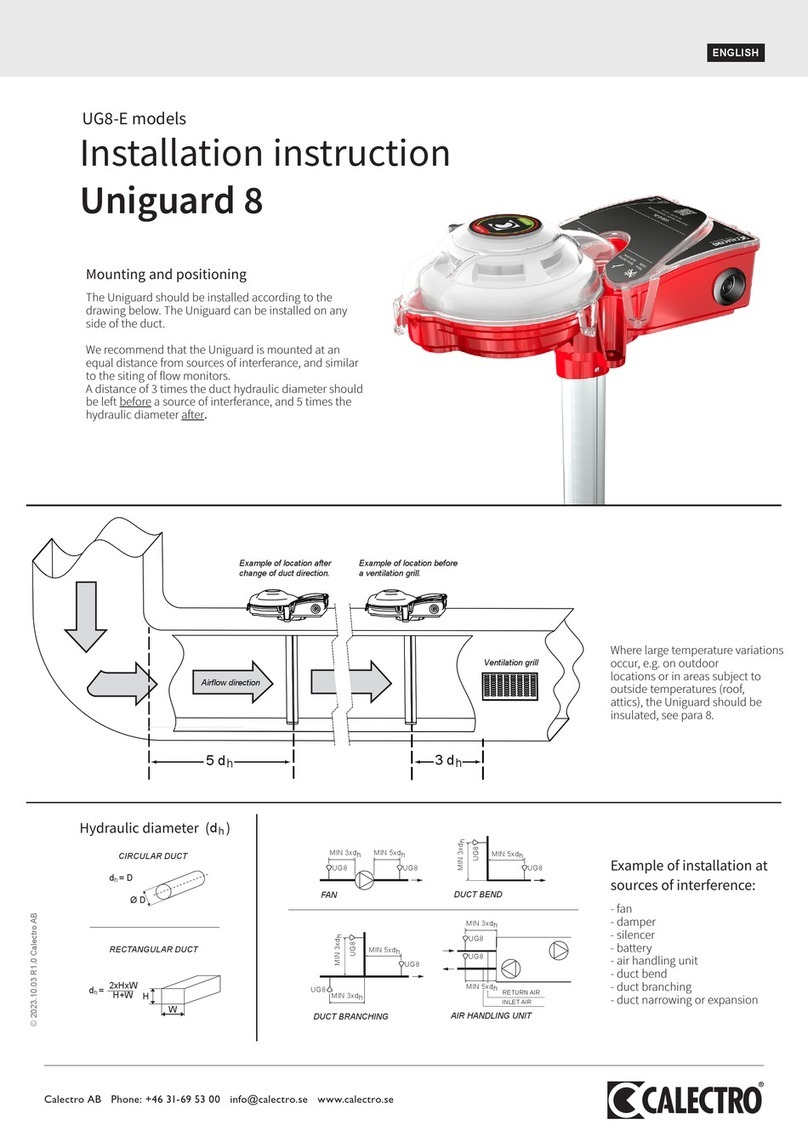
CALECTRO
CALECTRO Uniguard 8 Installation instruction

Radio Shack
Radio Shack 49-2010 owner's manual
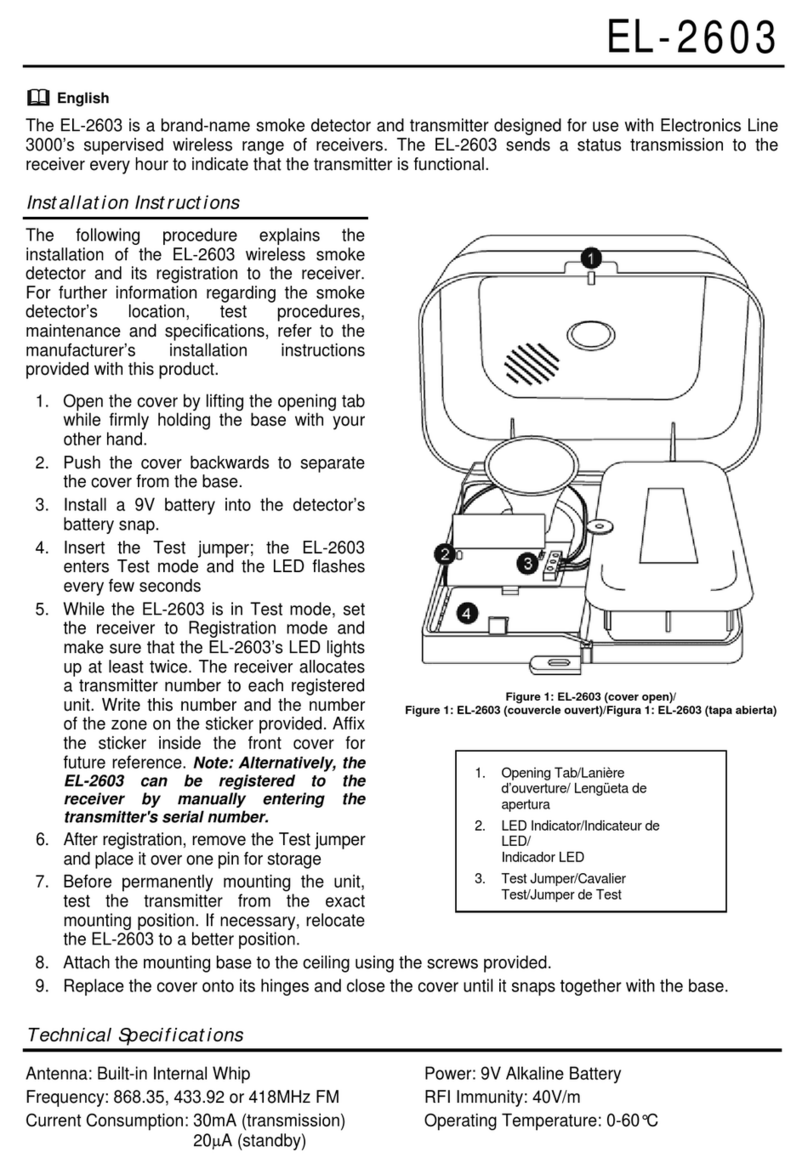
Electronics Line
Electronics Line EL-2603 quick start guide
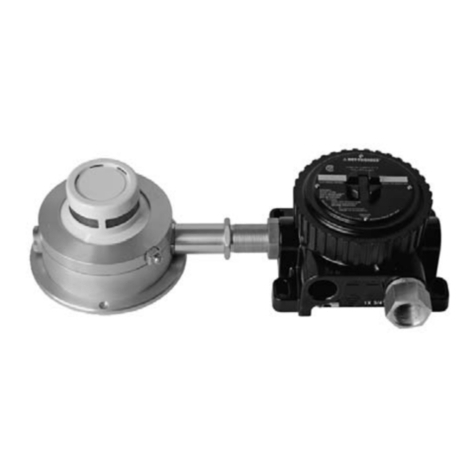
Pyrotector
Pyrotector 30-3003 instructions

Honeywell
Honeywell Fire-Lite Alarms BEAM355A Installation and maintenance instructions

AV-GAD
AV-GAD PIR-730 installation manual
